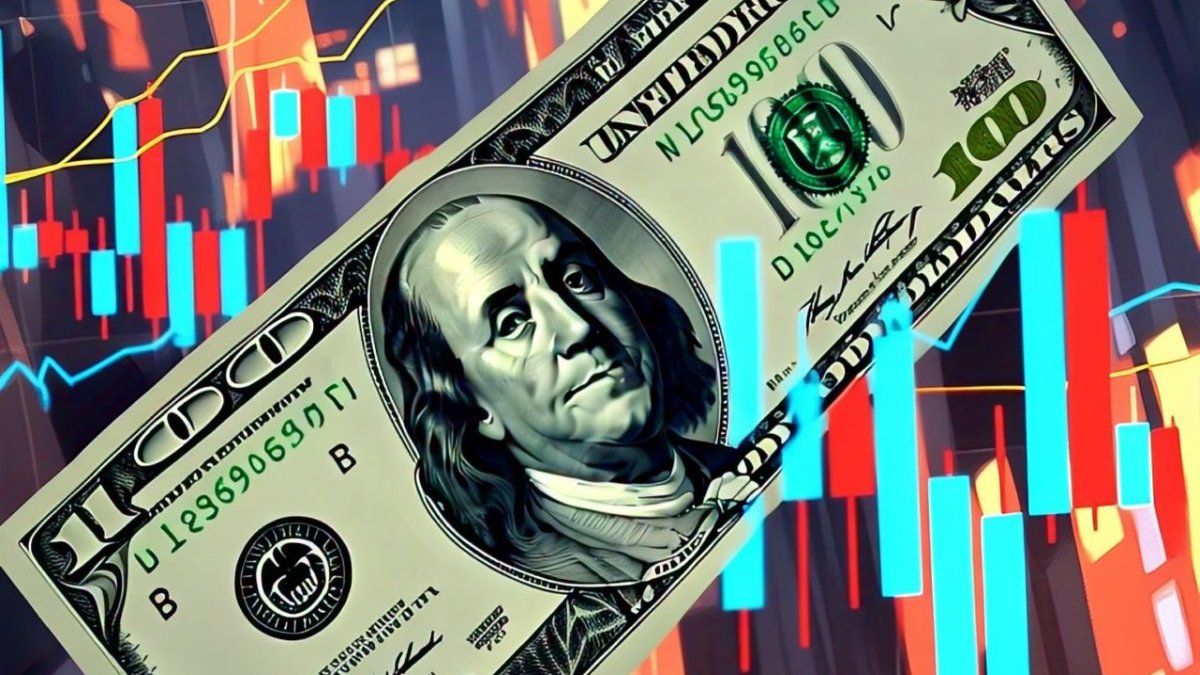A week after Argentina launched a new exchange scheme, the contours of a reform that marks a turning point for the bullshit economy of the country. The transition of a fixed exchange rate regime with Crawling PE to a flotation administered within an exchange band has generated optimism between investors and economists, although questions about their long -term sustainability persist. With the official dollar closing at $ 1,160 —A increase of 5.69% compared to the level of the previous week— and a $ 1,250 peak on Mondaythe initial results offer a window to the challenges and opportunities that are coming. While Argentina sails this new land, the President’s administration Javier Milei Bet on these reforms to stabilize the economy and restore investors’ confidence before the 2025 legislative elections.
A new framework for an economy in crisis
The new exchange scheme, announced on April 10, 2025 by the Central Bank of the Argentine Republic (BCRA), represents a significant change with respect to the rigid system of CRAWLING PEG that ruled the exchange market since December 2023. Under the previous scheme, the weight was subject to a controlled devaluation of 1% monthlya policy widely criticized for generating exchange delay and exhausting reserves. The new system establishes an exchange band with an initial range of $ 1,000 to $ 1,400 per dollar. The upper limit will increase a monthly 1%, while the lower will decrease in the same magnitude, creating a corridor that extends progressively to provide flexibility without losing control over volatility.
Dollar End of Cepo 1500
The new exchange scheme removed the restrictions on the exchange market and established a value of the dollar that will float between $ 1,000 and $ 1,400.
Scope
The change was accompanied by ato partial liberalization of capital controlsa structural characteristic of the Argentine economic landscape. Individuals can now buy dollars freely with funds in bank accounts. However, companies continue to face similar restrictions to those of the previous scheme. To address accumulated debts, the BCRA introduced a new series of bonds Boprealallowing companies to settle pre-2025 obligations in an orderly manner.
The backdrop of these reforms It is Argentina’s agreement with the International Monetary Fund (IMF), Finished on April 11, 2025, which provides a credit line of $ 20,000 million, including a dInitial Embolso of US $ 12,000 million. The agreement, described by the BCRA as a previous requirement for exchange liberalization, is intended to strengthen reserves, which remained negative in approximately –US $ 6,400 million in net terms in early April. The support of the IMF, together with additional financing of multilateral lenders and an repurchase ease of US $ 2,000 million with international banks, has given the government a margin of maneuver to implement its ambitious agenda.
Performance in the first week: A promising beginning?
The opening week of the new regime, shortened by holidays, served as a first proof of its resilience. The official dollar opened at $ 1,250 On Monday, April 14, reflecting the initial nervousness of the market, But it stabilized at $ 1,160 at the end of the week, 5.69% above the previous level. Crucially, the exchange rate remained well below the roof of the $ 1,400 band, preventing the BCRA from having to intervene selling reservations. This result was a relief for those responsible for economic policy, who feared that a rapid testing of the upper limit could undermine confidence in the nascent system.
Milei and Luis Caputo.jpg

The Government celebrated the departure of the stocks and looks at the 2025 legislative elections.
Several factors contributed to this relatively quiet debut. The government’s message has been clear: It seeks to anchor the exchange rate near the lower limit of the band, ideally around $ 1,000. To support this objective, the BCRA has maintained a restrictive monetary posture, focusing on the transactional aggregates of M2 to contain inflationary pressures. In addition, temporary reductions in agricultural export taxes (withholdings) and a new measure that allows non -resident investors to access the official market for investments maintained for at least six months have generated optimism on capital income. These measures are designed to encourage Carry Trade strategies.
Challenges and risks: the enigma of productivity
Despite the positive initial response, the center of the debate remains what will be the value of the dollar when in reality it should be: What is the equilibrium exchange rate that reflects the country’s productivity? A competitive exchange rate should, in theory, support a Positive commercial balance by making exports attractive and manageable imports. However, recent data suggests that the current exchange rate could be too appreciated to achieve this balance, which raises concerns about the sustainability of the new frame.
He Tourism sector It offers a clear illustration. In January and February 2025, with the MEP dollar averaging $ 1,164 and $ 1,223, respectively, The sector recorded a record deficit of US $ 2 billionthe largest in 15 years. This imbalance reflects an increase in trips abroad, driven by a relatively strong weight, which has drained reserves and highlights the sensitivity of the sector to the dynamics of the exchange rate.
The broader commercial balance presents an equally worrying panorama. Although Argentina has historically depended on agricultural exports to generate income in dollars, the first quarter of 2025 saw the commercial surplus of goods to reduce 85% compared to the same period of 2024. Imports grew more than 30%, driven by a stronger weight and a repressed demand after years of restrictions
These imbalances highlight a fundamental tension: although the new regime offers greater flexibility than its predecessor, it does not eliminate the risk of bad alignment of the exchange rate. A fixed exchange rate, such as the one that Argentina experienced under the crawling PEG, often leads to an overvaluation and exhaustion of reserves. However, even a flotation administered within bands can sustain distortions if the exchange rate does not align with economic foundations.
Projections: balancing stability and competitiveness
Looking ahead, the success of the new regime will depend on four key factors: the accumulation of reserves, inflationary transfer, political stability and return to credit markets. The BCRA’s ability to rebuild reservations is crucialnot only to support weight, but also to restore confidence in the external viability of Argentina.
Inflation remains another critical variable. The first estimates suggest that April inflation could be around 4%driven by the initial adjustment of the exchange rate. A low transfer – the degree to which changes in the exchange rate are transferred to consumer prices – will be essential to maintain social support for reforms. The restrictive monetary policy of the BCRA and the fiscal discipline of the governmentwhich points to a primary surplus of 1.3% of GDP in 2025, offer some protection, but any slip could rekindle inflationary expectations.
The political dimension cannot be ignored. With the legislative elections of October 2025 on the horizonthe Milei administration faces pressure to offer tangible economic results. The liberalization of the exchange rate has been an emblematic achievement, but its benefits – most investment, creation of employment and export growth – will take time to materialize.
Finally, the return to voluntary credit markets is essential for a country that faces a heavy expiration burden in the coming years and that seems to have already reached the maximum assistance of international financial organizations.
A step forward, but not a panacea
Argentina’s new exchange scheme is a remarkable improvement with respect to the suffocating controls of the pastoffering greater flexibility and a path to exchange unification. The results of the first week, although encouraging, are only a starting point. The Government’s challenge is now to take advantage of the strengths of the regime while mitigating its vulnerabilities, particularly the risk of bad alignment of the exchange rate and its impact on trade and inflation.
For the Investorsthe panorama is cautiously optimistic. Carry Trade’s opportunities created by high yields in weights and relaxed capital controls are attractivebut they come with risks linked to global volatility and domestic policy. The market, on the other hand, will closely follow the trajectory of the BCRA reserves, the evolution of the commercial balance, the level of activity and employment as indicators of the viability of the regime. While Argentina approaches a crucial election year, the new exchange scheme represents a commitment to continue normalizing the Argentine economy. If it will succeed, it will depend on the delicate balance between market forces and policy discipline, a balance that Argentina has fought to achieve in the past.
Source: Ambito
David William is a talented author who has made a name for himself in the world of writing. He is a professional author who writes on a wide range of topics, from general interest to opinion news. David is currently working as a writer at 24 hours worlds where he brings his unique perspective and in-depth research to his articles, making them both informative and engaging.




